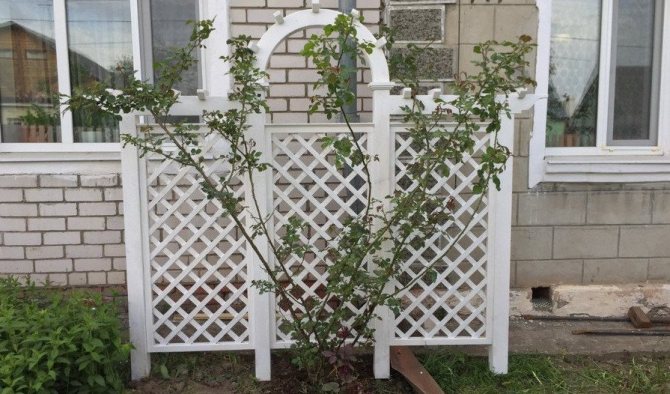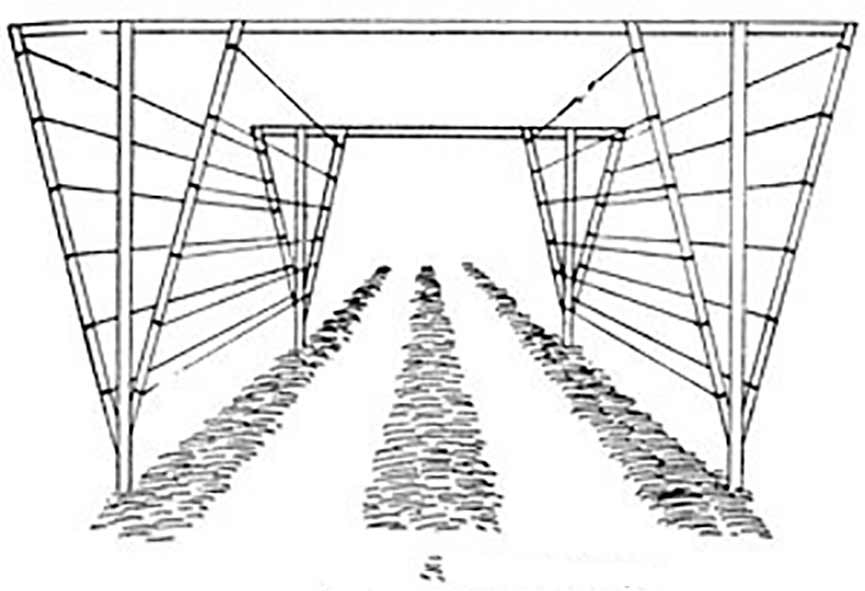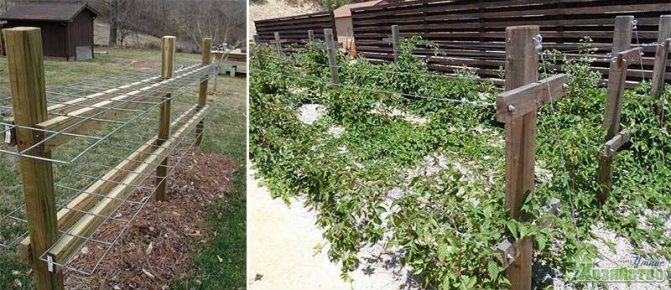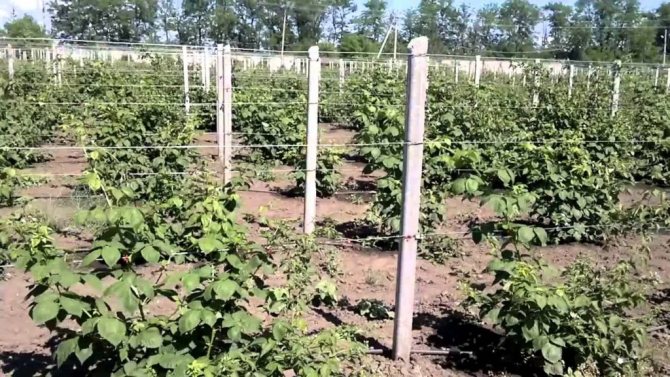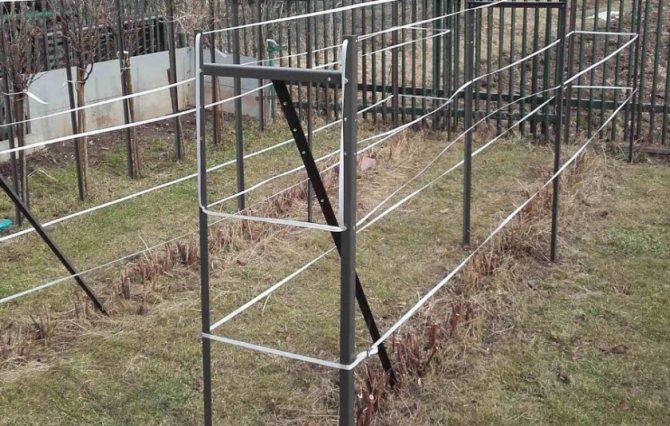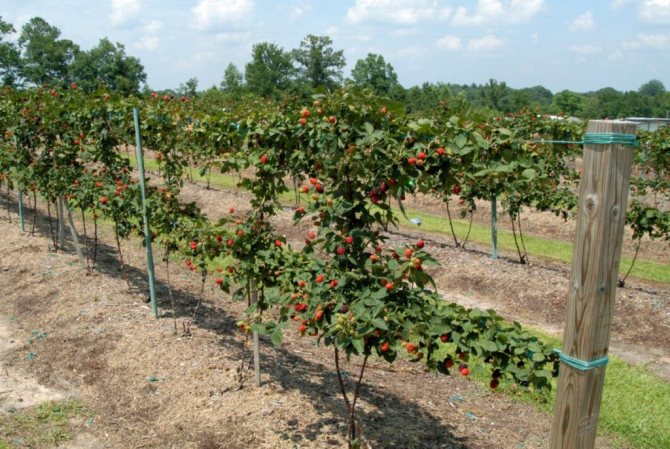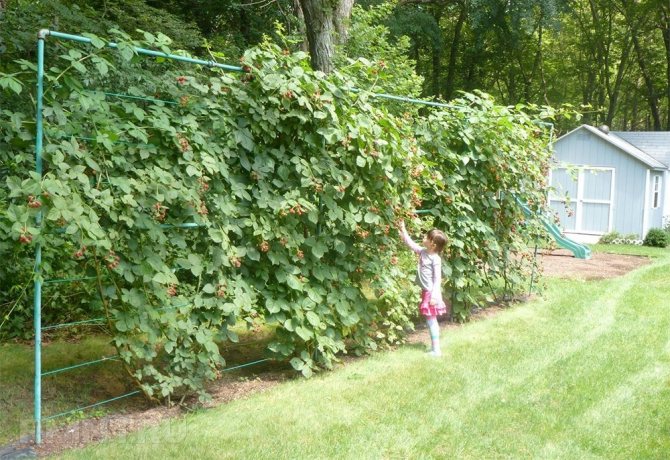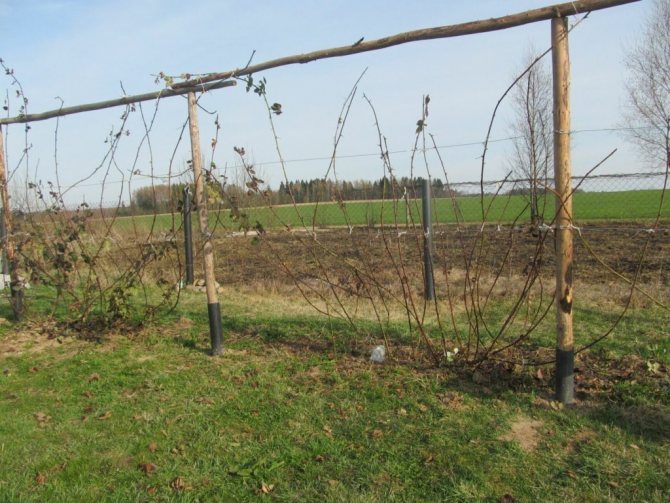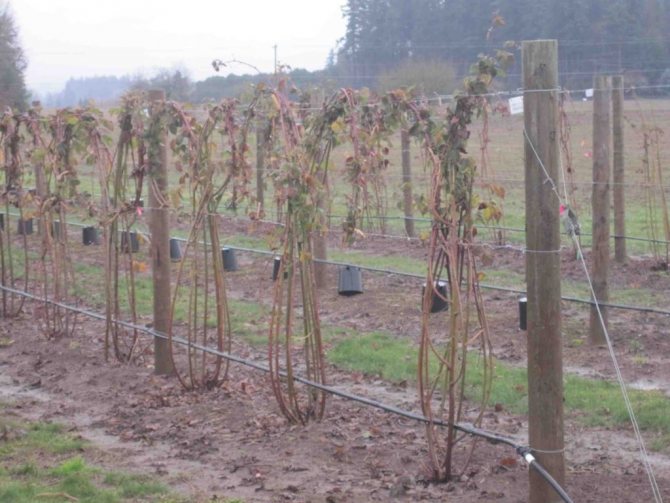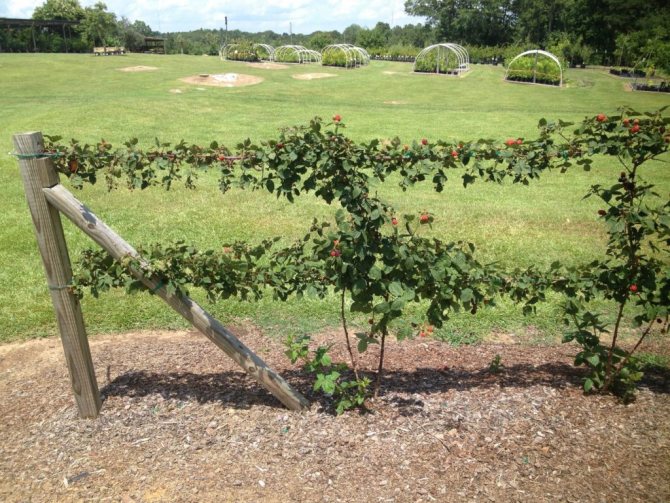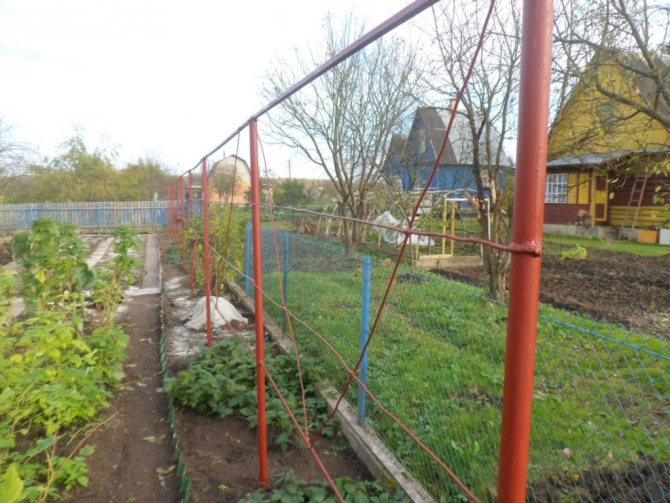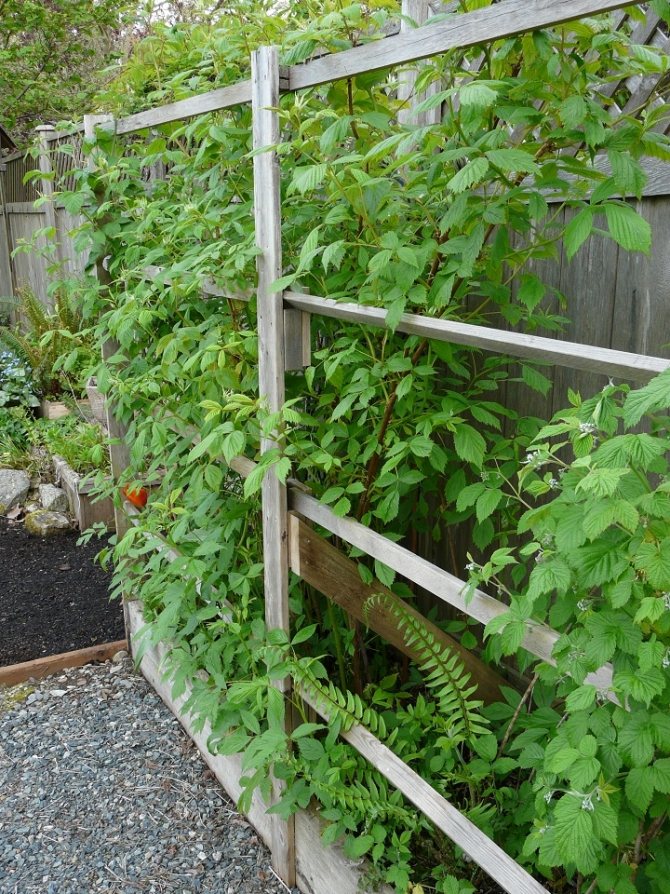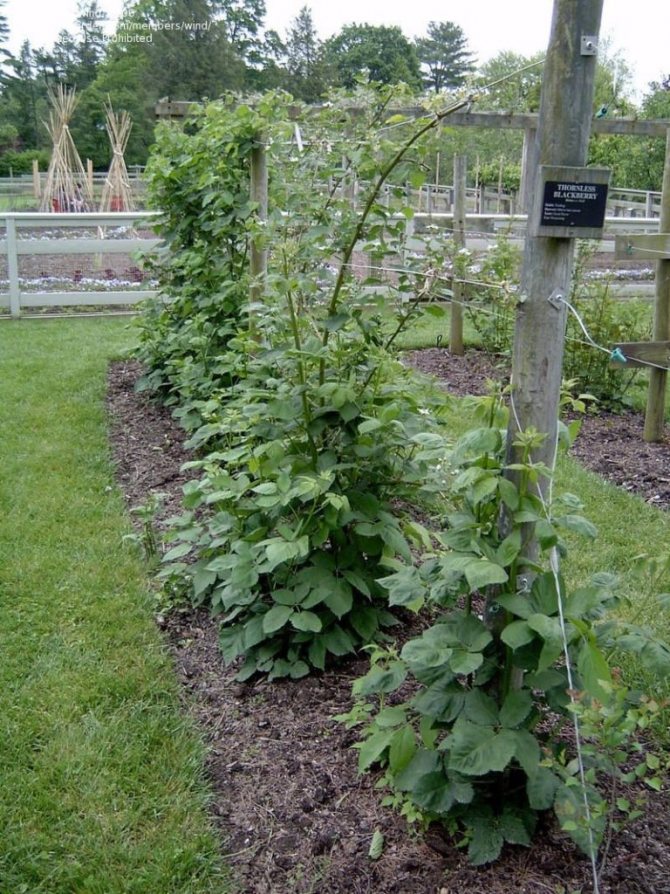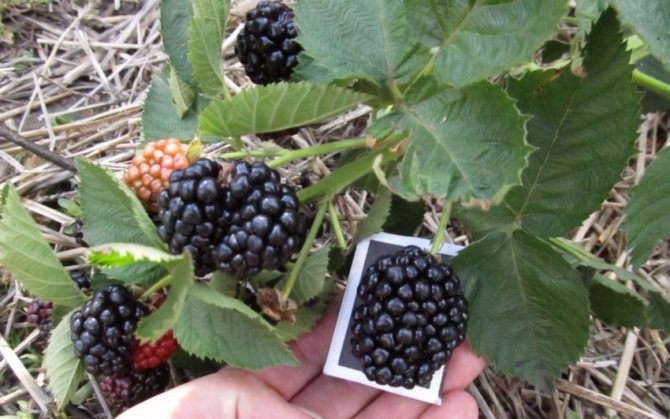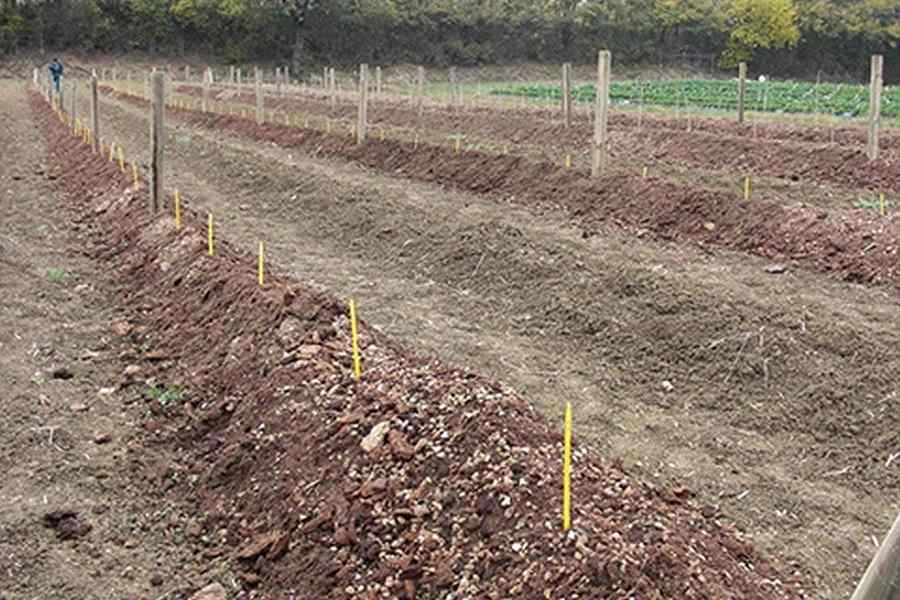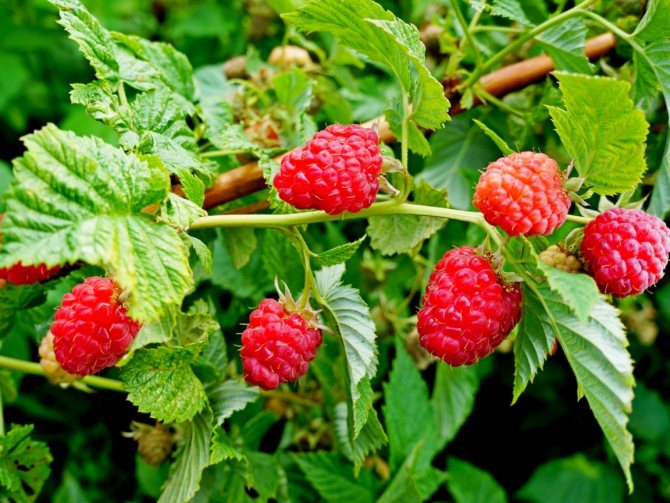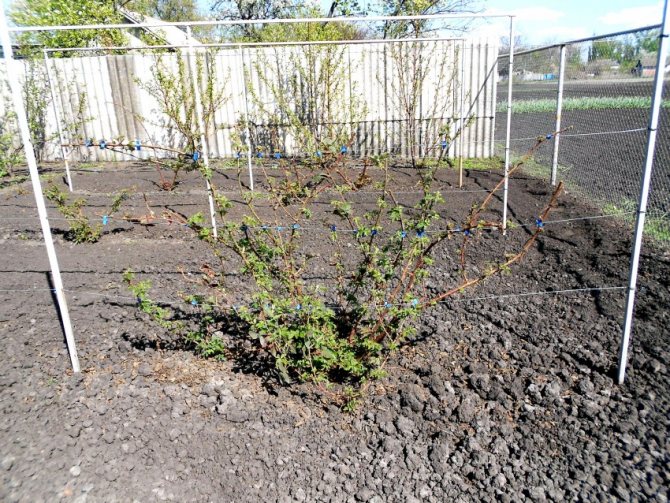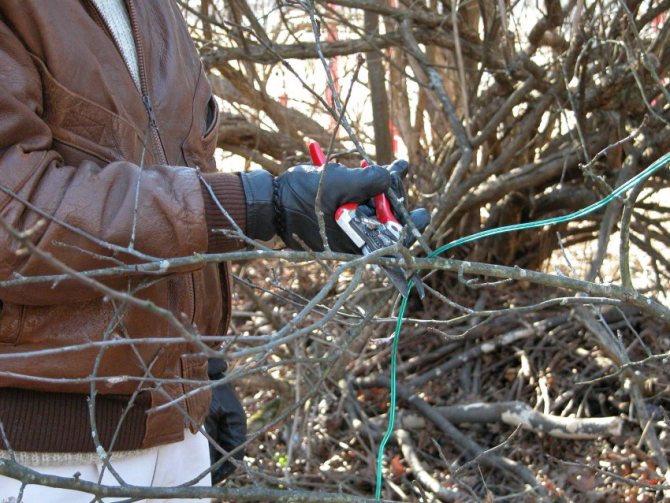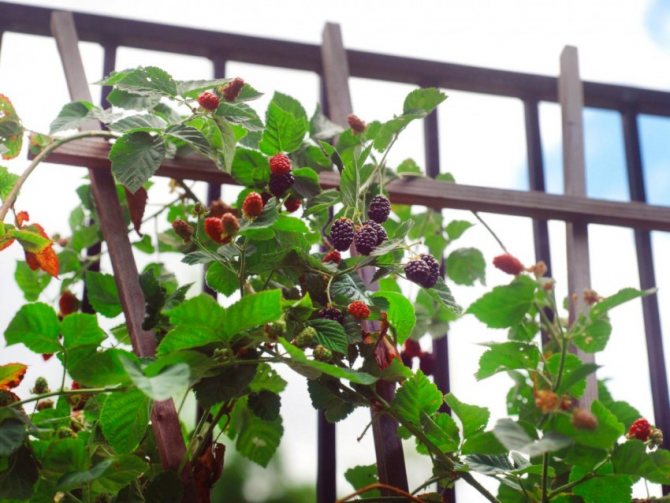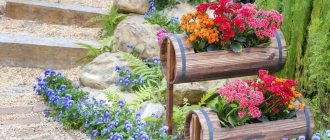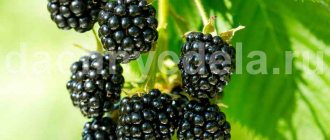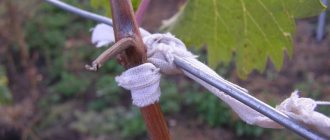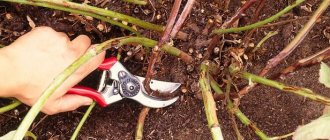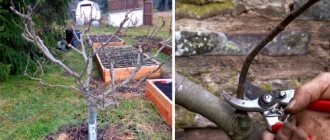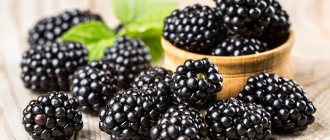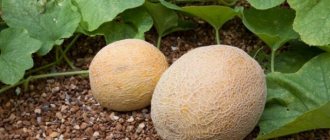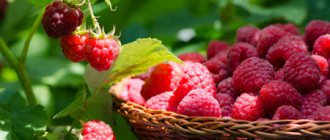Description and benefits of blackberry trellis
The trellis is a special structure that is used to support the branches. The material for its manufacture is most often wood or metal. However, every gardener can be creative in this issue and do with other available means.
It is necessary to install trellises at the time of planting seedlings, since in the future, after the bush begins to develop and grow, it will be problematic to do this procedure.
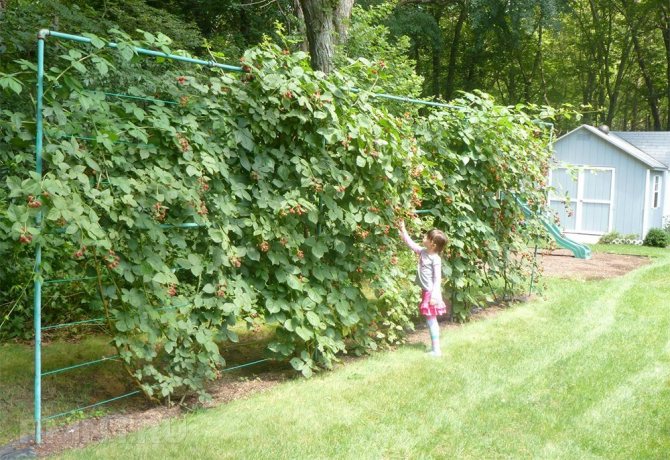
The use of trellises when growing blackberries
Blackberry trellis have a number of advantages:
- The use of special supports makes it easier to care for the plant in the country. The shoots on them are located in such a way that the gardener can loosen the soil and remove weeds without much difficulty.
- The branches located on the trellises are illuminated by the sun on all sides, which accelerates the ripening process of the berries.
- The fruits do not come into contact with the ground and are well blown with air. This increases their number, as they are less likely to get sick.
- Structures facilitate the harvesting process, because the gardener is less injured by thorns.
- In autumn, shoots that are tied to supports are easier to cut and cook in winter.
Branches attached to the trellis develop better and form new ovaries faster, which contributes to higher yields. In order to know how to tie a blackberry correctly, you should study all possible support structures.
Important! In beds where the level of humidity is high, the trellises must be installed on a small hill: this will reduce the risk of spoilage for a year.
Blackberries - preparing for winter
There are many ways to place blackberries on trellises, consider the most common of them.
When to start caring for blackberries for the winter?
A number of varieties are RASPBERRY-BLACKBERRY HYBRIDS, which have arisen as a result of crossing these plants with each other. All of these varieties are characterized by a creeping bush and thorny shoots, although there are thornless clones. In terms of agricultural technology, they are very similar to ROSYANIKA. The varieties of the last two groups (ROSYANIKA, SEMI-BREWBERRY), as well as RASPBERRY-BLACKBERRY HYBRIDS, are characterized by low winter hardiness; in the northern regions they must be covered for the winter. To do this, in October, before the onset of autumn frosts, the stems are removed from the trellis, all the fruit-bearing shoots and unripe tops of young stems are removed and burned. Then they are laid on the ground or tied in bunches and with the help of hooks they are bent to the ground, then they are covered with straw, plant debris or earth.
Blackberry care video
Starting from the end of summer and up to frost, the primary task, in addition to the ripening of the crop, is the preparation of the bush for wintering. Summer shoots, which are now lignified, should ripen. The roots also store nutrients for winter. Nowadays, potash fertilization is the most important. Phosphorus is now required by blackberries much less. Nitrogen is generally excluded. Excessive growth of greenery is now useless.
In the photo, planting blackberries
- By providing the plant with favorable conditions, you will help the bushes to calmly endure low temperatures and provide you with tasty and healthy berries next season.
- Having figured out how to prepare the blackberries for winter, and having freed the bushes from unnecessary shoots, you can start covering the bushes. For convenience, the stems are tied into bunches and bent to the ground, securing with hooks. However, only creeping blackberry varieties bend well, and blackberries with erect stems require a different approach: so that the shoots do not break during bending, at the end of summer a small load is tied to the tops, under the weight of which the shoots themselves gradually lean to the ground. When the blackberry sheds its leaves, the stems are bent down more and covered for the winter, and with the arrival of spring, the plants are raised, tying the stems to the trellis.
- First of all, you need to pay attention to the proper care of blackberry bushes. It includes:
- After the snow melts, you must carefully consider the bushes. So, if you see shoots that are blackened or fragile to the touch, cut them off immediately.
- In addition, such wood will begin to thicken the bush, preventing young shoots from ripening. There are also a number of other reasons that lead to the need for pruning:
- In the second case, when premature lateral shoots 30-40 cm long appear on one-year young shoots, they are shortened in autumn, leaving 4-5 buds, and in spring they are cut off again, leaving 2-3 buds. The top ends of the stems can be simply cut off without the risk of significantly reducing the yield.
FAN SHAPING
2. PLACE THE BUSTS CORRECTLY. CHOOSE A LAND
An important stage in preparation for wintering is pruning blackberries
It is important to cover when cold daily temperatures are already established. In spring, we also open the bushes when severe cold weather has passed. Above the trenches, you can install a temporary non-woven cover on the arcs. After the spring frosts have passed, we raise the whips to the trellises.
In addition to the main dressings, black berries need trace elements such as selenium, zinc, manganese, molybdenum, iron, copper, etc. The benefits of having them are difficult to notice, they have little effect on the strength of growth, productivity, maturity. But the deficiency of one or more of them is expressed by one or another disease. Plant immunity directly depends on microelements. Competent fertilization with microelements answers the question of how to grow blackberries in the country, to protect them from diseases, without resorting to various pesticides.
Based on what size we will lay the blackberry plantation, we set the length of the trench. The distance between the bushes should be about two meters for kumanik and at least three meters for dews. If planting in more than one row, keep two meters wide between them. The width of the trench is 40-50 centimeters, the depth is the same half a meter. Place the excavated earth with a shaft from the side of the trellis. Strengthen the walls from shedding by digging in boards or pieces of slate. The bottom can be covered with a layer of fine gravel or sand. This improves the permeability of the soil. Pour a layer of leaf or meadow humus mixed with manure on top.
Why is it very rare to find such a culture as blackberries in our gardens? Growing it is not that difficult. In any case, no more difficult than raspberries or currants with gooseberries. And the yield is even higher than them. It's time to get to know her better.
How to cover blackberries for the winter and what material to use?
The photo shows a blackberry sheltered for the winter
Regular watering,
In this case, it is advisable to work with gloves, using a lopper. In the meantime, there is no need to know about it. ”
If there are too many old growths on the bush, then the nutrients will go to them, and not to the young shoots that need them for development.Magazine "Real owner" №5 2008
- The simplest method is fan formation, in which the shoots are placed separately - fruiting and growing. The distance between plants is 2-3.5 m. It is used for KUMANIKI and low-growing varieties of SEMI-GROWING BLACKBERRY.Moreover, in the first season after planting, the young shoots that have appeared are tied to the trellis obliquely only in one direction. Next year they will bear fruit, and the emerging new shoots, as they grow, are tied up and directed in the other direction. In the fall, the old, fruiting shoots are cut off, and everything is repeated from the beginning.
- With good care, blackberries can grow and bear fruit in one place for up to 12-15 years. It is considered a very undemanding berry crop. Like raspberries, it prefers well protected from the wind and illuminated areas, although it can tolerate slight shading, however, with low light, the berries ripen 5-7 days later.
- What you need to know to increase your blackberry yield
- Use organic fertilizers actively, the berry will immediately respond with a significant increase in yield. It is recommended to use effective microorganisms, as well as a complex of humic acids. These dressings contribute to the colonization of irrigated areas with important bacteria, which assimilate mineral compounds in a form that is digestible for the roots. The best quality drugs in this category are Japanese and Siberian.
- It is best to use rotted horse manure - this is the most favorable environment for the growth of berry bushes.
Blackberry photography
https://youtu.be/gdyhwst5EEg
Covering blackberries for the winter is necessary in most cases. Even frost-resistant varieties need light shelter if the temperature is expected to drop to -20 degrees, all other varieties run the risk of freezing in frost from -17 degrees.
Thinning bushes,
You should not be afraid to cut off the excess - a healthy plant is characterized by rapid growth, so that even in one season the bush will be able to restore its size.
Types of trellises
The support for the blackberry can be of various types.
Single-strip model
Such a support for the blackberry of this model has the form of pillars united by a tensioned wire in one plane.
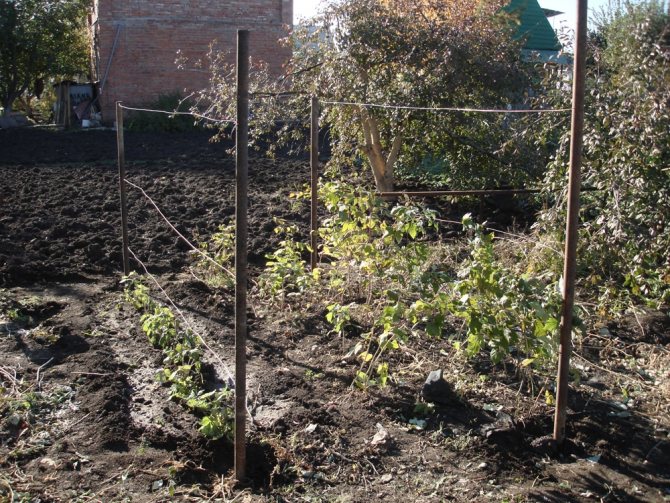

Single-strip trellis
In order to make such a structure stable, gardeners dig them deep into the ground and use metal wire, which is wrapped around them in 3-4 rows.
This support is installed at the required slope, depending on the place where the bush grows and the individual preferences of the gardener. It is easy and simple to install and does not require a lot of materials.
In the process of fixing the bushes on the trellis, the gardener must tie each shoot to it and thereby set the desired direction for the growth of the plant.
Two-way model
The support for this type of blackberry has two planes. It can be made from poles, wire or other materials.


T-shaped two-lane support for blackberries
There are the following types of tapestries of this model:
- T - shaped supports. This type of support is made in the shape of the letter "T". Pillars are installed between the rows, on which the crossbars are mounted. A wire is tied to each crossbar. By tying the shoots, the gardener distributes the branches in such a way that the center remains free.
- Support "Y". This type of trellis provides a support that is made in a Y-shape. The advantage of this type of support is the ability to adjust the height of the structure.
- V-shaped support. This design is very easy to manufacture. The pillars are dug in so that their ends are pulled out to the top and have a "V" shape. The wire is pulled along the posts.
Varieties
There are 2 types of trellis structures:
- The single-lane structure is mainly used in small areas.
- The two-lane model is essential in large farmland environments.
Single-strip model
It is the simplest design. The basis is dug in posts, between which a wire thread is fixed.The height of such a support is set at the mark of human height. Such supports can be not only vertical, but also inclined, fan-shaped, horizontal.


Two-way
This design is similar to the single lane design, but the columns are installed in two rows. Such a support makes it easier to garter the blackberry, facilitates the formation of the plant, and protects it from thickening. By their structure, the supports are divided into 3 types: T, V, Y-shaped.
T-shaped
Such a trellis is formed from upright columns. Horizontal beams are fixed to these elements at an equal distance. A wire thread is attached along the edges. In this way, two guides are formed for the garter of the lashes.
See also
Description of the best varieties of blackberries for the Moscow region, planting, growing and careRead
V-shaped
This design is characterized by the fact that the pillars are installed at an angle. Wire guides are attached to the upper ends of the trellis.


Y-shaped
Such tapestries are one of the most difficult. They are mainly made on hinges. This structure makes it possible to make the structure rotatable.
Growing blackberries on a trellis
Before starting the installation of the structure, it is important to carefully choose the variety that will be grown in the future. The terrain in which the support is used is also of great importance: the most optimal is a site without lowlands and hills.
After the site for planting seedlings is prepared, it is necessary to make beds. Having chosen the most suitable type of trellis, installation is carried out next. After the supports are equipped, it is important to know how to properly tie the blackberries to the support so that the bush is not damaged and the berries are evenly illuminated by the sun.
Spring care for blackberries
Spring procedures begin with removing the shelter from the crop. Having freed the blackberry bushes, the gardener carefully examines them, carrying out the necessary care manipulations.
Top dressing
In the spring, it is imperative to feed the plant - this will not only give nutrients and an impetus for development, but also serve as the prevention of diseases and pests. A culture weakened after winter is vulnerable to both. The bush is fed with mineral fertilizer for the 2nd and 3rd year after planting. Gardeners use urea or ammonium nitrate, embedded in moist soil (20 g / 1 m²).
Important! Feeding with organic matter annually can provoke a strong growth of green mass to the detriment of flower and fruit ovaries.
In the 4th year, a complex of organic and mineral compounds is used, which were used during planting:
- compost - 5–7 kg;
- ammonium nitrate - 40 g;
- potassium salt - 30 g;
- superphosphate - 90 g.
Garter methods
To get a large harvest, you need to know how to tie the trellis correctly and provide the plant with all the necessary conditions for growth.
Weave
The procedure must be carried out in early spring, when young shoots begin to form. The gardener needs to organize the weaving of the lower tiers of the trellis with old shoots. Young branches straighten and stretch upward.


Tying shoots using the weaving method
By fan
This method is often used by gardeners. For a garter, it is necessary to tie the shoots of the bush to the support. In this case, the old branches are tied to the lower tier, and the young are sent up.
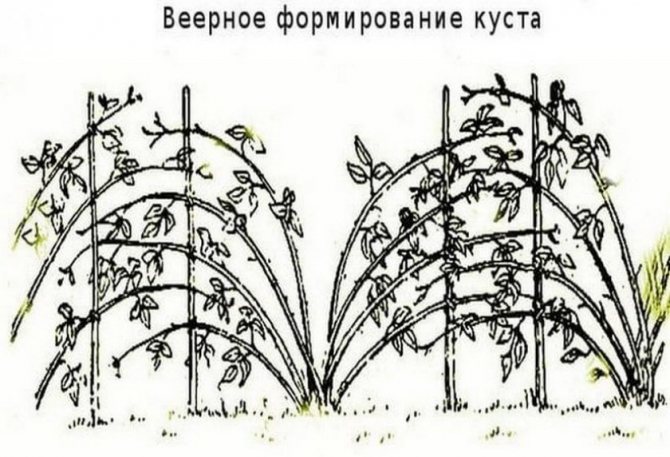

Fanned garter shoots
Thus, a kind of fan is formed. It is necessary to use this garter method in the spring. Tieless types of crops are easily tied up throughout the season, as they do not cause discomfort during work.
Unilateral tilt
This method is very simple. All shoots must be tied up along the trellis, while the bush tilts to one side. When young growth appears, it must be thrown to the other side. This will make it easier to care for the plant and make the harvesting process easy.
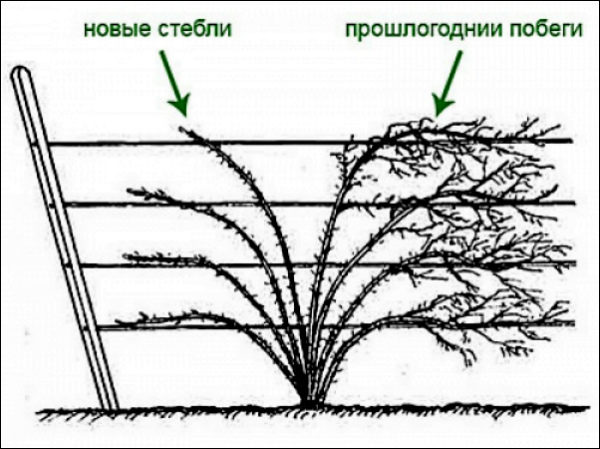

Unilateral slope of bush shoots
Why is blackberry support useful?
In order for the trellis to give maximum efficiency, you need to know how to tie a blackberry to it. When tying to the simplest trellis, the branches must be fixed to the wire as they grow.
Well-groomed bushes of garden plants are always admirable. The blackberry trellis helps hobby gardeners keep this crop tidy. How the support will look like, each summer resident decides for himself. You can make a stand for a blackberry with your own hands, or you can buy a ready-made support.
Before proceeding with an overview of the types of supports, it should be noted that growing blackberries on a trellis has many advantages:
- raised whips are not smeared on the ground during rain or watering;
- berries remain clean, are not eaten by pests crawling on the ground;
- good ventilation of plants on a large plantation reduces the risk of fungal infection;
- uniform penetration of sunlight helps to accelerate the ripening of berries throughout the plant.
In addition, supports for blackberries benefit the person himself:
- a tied plant is easier to care for;
- when trimming old lashes, young shoots are not injured, since they are not intertwined;
- plantings are easier to water, the possibility of mulching the soil is provided;
- it is easier to harvest at a height;
- in autumn, the plant is easier to prepare for wintering.
If the question arises whether it is necessary to tie up a blackberry, the answer is unequivocal - yes.
Making a tapestry with your own hands
The blackberry trellis can be assembled by hand. To do this, you do not need to have special knowledge: you just need to follow the instructions. Installation of the structure does not take much time and available means are suitable for it.
Before starting work, it is recommended to make a drawing with all measurements and only then proceed with the installation. In order to make support with your own hands, you must perform the following algorithm of actions:
- In order to make trellises, you need to prepare pillars (wood or metal).
- Next to the beds where the blackberries will be planted, it is necessary to drill holes using a special device.
- A brick or pebble should be laid at the bottom of each pit to stabilize the support.
- The pillars are placed in prepared places to a depth of about 30-40 cm, covered with soil and carefully trampled underfoot. The distance between them must be at least 5 m.
- It is necessary to make marks on the posts where the wire will pass.
- They fix the steel wire on the supports using special brackets or welding and stretch it well (it should not sag anywhere). The distance between the attachment points is at least 60 cm. It is recommended to use 3-4 tiers of wire.
Trellis fence
A great idea for landscaping is to use a trellis as a hedge. To implement this technique, blackberries are grown as a standard plant. This means that when pruning, one central trunk is left, forming a bonsai as it grows.
- The advantages of such a garter:
- saving space - the width of the fence usually does not exceed 20 cm;
- ease of care and harvesting - one narrow tier is easier to handle and pick berries than bush planting;
- disease prevention - plants are open for airing, there are no conditions of high humidity, which fungal spores love;
- an additional decorative element of the garden and protection for low-growing plants planted nearby.
Did you know? Blackberry honey on the market is considered one of the tastiest and most intense types of honey in existence today. The product is appreciated for its transparency, special berry flavor and medicinal properties.
The fence can be built in any shape: flat fan, diamond-shaped weave, in the form of a pyramid.
Whichever version of the device is chosen, it is built according to the general instructions:
- At a certain interval, depending on the type of construction, support pillars are installed.
- Stretch the wire, maintaining the spacing between the rows.
- The central shoot in the 1st year is cut at a height of 10 cm from the surface of the garden.
- The next year, 2-3 branches are left growing parallel to the support plane, the rest of the shoots are cut out.
- Using twine or wire, the stems are secured.
- Haircuts are carried out annually to maintain the desired shape.
- When creating a hedge, blackberries are planted tightly: the distance between the bushes is 30 cm.
Why prune blackberries
This berry belongs to biennial plants. It gives a crop only with the "old", last year's lashes. New sprouts grow stronger in the first year, gaining strength to bloom and give berries next summer.
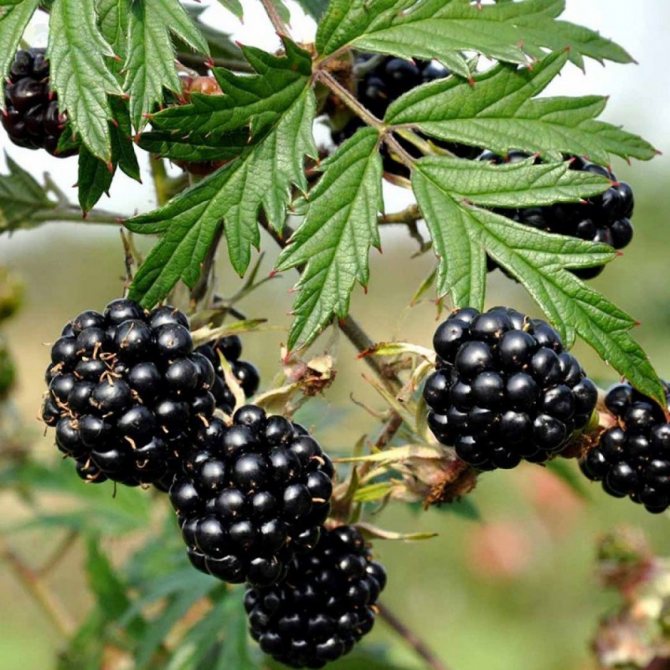

The crop is harvested, and now the fruiting branches are unnecessary ballast for the bush. They interfere with his development, make him too dense. The additional shadow created by the old lashes obscures the fresh stems, because of this, they cannot grow normally.


Therefore, it may turn out that in the end you will see one or two small berries, to which you still need to wade through the entire thorny bush. In order not to puzzle over how this happened, it is necessary to cut the blackberries correctly and in time.


Schemes for tying stems to a trellis
Since the shoots of the second year bear fruit near the blackberry bush, in the spring it is necessary to fix the branches on which the fruits will be on the trellis, and the young replacement shoots, which will only grow, are guided and fixed gradually during the summer. It is very convenient to place them separately from each other.
If the bush is formed in a fan, then the existing shoots are fixed on one side, and the young growing ones on the other. It so happens that you can harvest only from one side of the bush, and in the fall all shoots on this side are completely removed, they will not get confused with new young shoots, which are simply shortened in autumn and sheltered from frost. Some gardeners fix the fruiting shoots right in the middle, spreading them so that they do not shade each other, and the young ones direct them to the right and left of them - so nothing will get confused either. This is usually the case with kumaniks. But the dewdrop has too long and flexible branches to simply direct, they are braided.
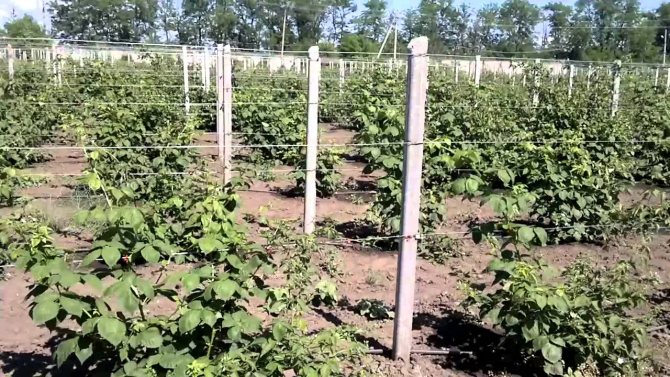

Left for fruiting, already in the spring, the long branches of creeping varieties are raised to the very top, each of them is twisted several times around the upper wire, then lowered to the middle one. They grow further, they are entwined several times around the middle wire and raised to the top - this continues all summer.
And young shoots, which are just beginning to grow in the current year, are wrapped around the lower wire. The main thing is to do it not too densely, so that all the buds of young shoots have enough sun and freedom for further development.
Other summer residents prefer to bring young shoots to the upper level in the middle, and fix the fruiting ones at the two lower levels, directing them in different directions - it is easier to harvest.
You can choose different options for tying shoots to the trellis, the main thing is that in the fall they can be easily removed, so that young shoots do not get confused with fruiting ones, so that in summer all the branches have enough sun and air.
The latest development - a swivel trellis


The latest development of American scientists is a rotating trellis for blackberries, which allows you to grow crops in cold regions. The technology is gaining popularity among large producers around the world supplying berries for sale. Scientists have proven the uniqueness of the design, for which its own system of forming bushes has been developed, which allows for large yields annually.
The essence of the technology lies in the fact that already at -23 o C of blackberries, fruit buds freeze. In cold regions, creeping varieties are easily laid on the ground, covered with straw mats until spring.A semi-cured blackberry variety cannot be bent to the ground. Lignified trunks and shoots break when removed from the trellis. It is very difficult to bend the whips. The swivel trellis allows you to lay the plant on the ground without removing the lashes from the wire. The design is simply transferred to the winter position by loosening the tension of the lines and turning the hinge. A simple laying process, even on a large plantation, can be done by two people.


Do-it-yourself swivel trellis for blackberries in the country is not very in demand. However, when growing a special favorite variety, you can try to build. The structure of the support itself is made in the shape of the letter "Y". The secret lies in fixing the upper fork of the posts to the main post. In this place there is a hinge with a lock. Single stationary pillars are installed as extreme ones in a row on both sides. Stretch braces are stretched to them, holding the supports.
The use of pivoting tapestries has its advantages:
- yield increases due to free weaving of shoots on the sides of the support;
- the opportunity to grow thermophilic blackberry varieties in cold regions is provided;
- improved airing of the bush, penetration of sunlight;
- the risk of burning berries during the heat is reduced;
- simplified harvesting, laying bushes for the winter.
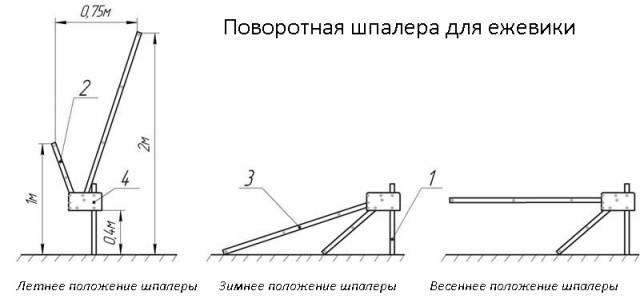

The pivot structure consists of a main strut, a short and long arm, and a hinge, which is often used as a metal bolted plate.
The support has three positions:
- Summer. This provision is considered basic - basic. The support is installed vertically. Fruiting blackberry lashes are fixed on the long shoulder. All new branches are directed to the short shoulder. These lashes will bear fruit next summer. The trellis is turned so that all fruiting branches are obtained from the side opposite to the sun to prevent burns of the berries. It is convenient to harvest, since the fruits are located on one side at the height of human growth.
- Winter. In this position, the support is placed on the ground. Young shoots are obtained inside the shelter, due to which the protection from the frosty wind is enhanced. Preparations begin in the fall. On the bushes, old branches are cut right at the base of the trunk and removed from the long shoulder. In their place, young branches are shifted, which in summer grew along a short shoulder. The support is turned to the ground. The laid blackberries are covered with straw mats or agrofibre.
- Spring. During this period, the kidneys begin to awaken. The support is raised so that the long arm with lashes is horizontal to the ground. This position promotes the formation of berries on one outer side of the trellis fork.
After the growth of small shoots, the structure is transferred to the basic summer position.

